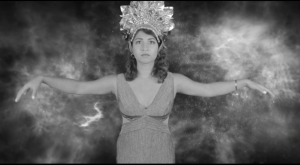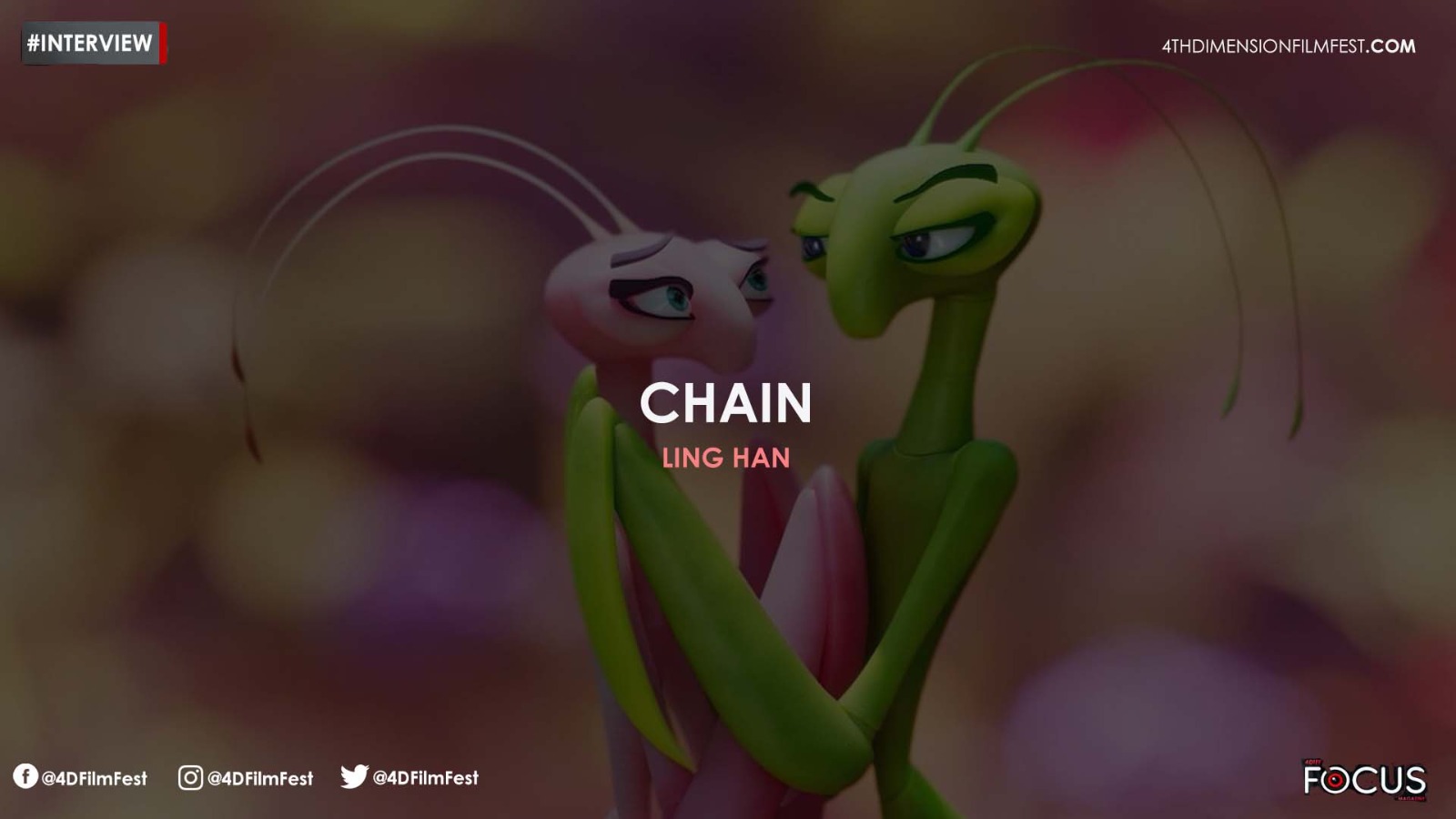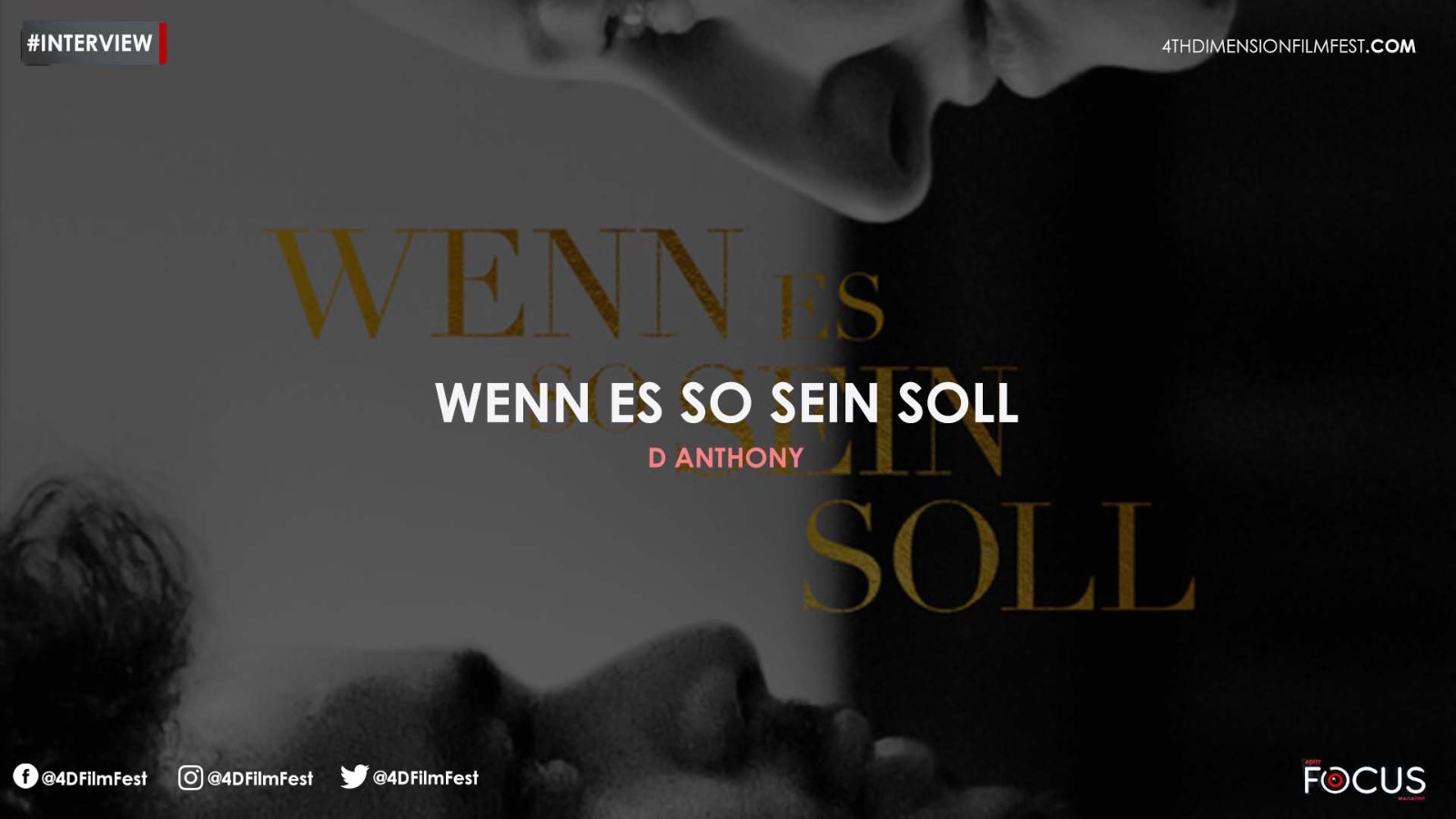Colin Robert Denhart is an independent filmmaker based in Indianapolis, Indiana. He is a 2014 graduate of Indiana University and works as a producer at WISH-TV. Sister is his first feature-length film. He previously has produced several music videos for local artists and made multiple short films, including Halloween Cat, The Girl in the White Room, and Double Cloud Nine. Outside of work and films, Denhart is involved with the Freemasons, the Episcopal Church, Knights of Pythias and other local organizations. He practices Transcendental Meditation.

Colin, welcome to Focus! It’s an absolute delight to have you here! It’d be interesting if you could share what drove you to write this movie?
Thank you! I am happy and honored to be featured in your publication. The idea for Sister came about while I was on the Transcendental Meditation Sidhi program in Fairfield, Iowa during Summer 2019. I was undergoing a deep level of consciousness expansion while on the program and some of my most creative ideas for films manifested during the time, much like how The Beatles developed The White Album while with Maharishi in India in 1968.
I had thought of making another short film but was at a point in my film career where I already had made several short films and music music, so I felt it was time to make my first feature-length movie, but I wanted the film to be meaningful and something uniquely original and one that I can be proud of for the rest of my life especially if it ended up being my only feature film.
When coming up with the idea for the film, I was thinking about the quest for light in a world of darkness, mirroring my own search for spiritual light through Transcendental Meditation, Freemasonry, and my religious experiences. I realized a nun is possibly the best representation in the Western world of an individual who seeks spiritual light while also facing dark challenges and struggles, so I chose to make a story about a nun as my central focus for the film.
In my process of filmmaking, I have developed a technique I call “reverse engineering.” Usually, the final stage of a film is its CD soundtrack, so what I typically do in the development of a film idea is the reverse and create a playlist of songs and music that I envision would be the soundtrack to the movie when it is released. I listen to the created playlist constantly over and over again as to visualize the film until I get a clear image of the film in my head and then write down the basic outline for the story and characters of the film. Some songs in my inspirational playlist for Sister include “Eleanor Rigby” by The Beatles, “She’s Lost Control” by Joy Division, “Angel Baby” by John Lennon, and “St. Matthew” by The Monkees.
At the same time, I was reading a book about the haunted history of Indianapolis (where I live) and was fascinated with some of the dark events that had occurred in the city in the past, so I incorporated them into the story to make the horror even more real and blur the line between fact and fiction. Also, I grew up in the Catholic Church and attended Catholic school in my early years and was an altar boy. My priest Father Tim
and nun Sister Lenore in school taught me a lot about religion and the history of Christianity, and they were a major inspiration in the subject matter of Sister.
Once the script was written, I sought out actors for the film and scouted for locations that would be ideal for filming.
You have explored the dark past of Indianapolis by incorporating historical elements. Would you like to share if you want to go on exploring various parts of the continent like this?
I always have had fascination with historical locations. Stepping into a historical place is almost like going back in time or being in a timeless state. I definitely would love to explore more historical locations in future films. Of particular interest to me are the ancient Native American lands in Indiana, since the name “Indiana” literally translates to “Land of the Indians” even though there are very few Native Americans who still live in the state. Highlighting these locations in a future film could be a great way to bring a lost history alive. I also like the idea of filming Freemason Lodges, Knights of Pythias Lodges, and historic churches since many of these buildings are among the oldest still standing in local communities and thus hold some of the oldest tangible history.
What attracts you towards such incidents?
I am interested in historical places, especially the dark/evil history because there seems to be something eerie about them as if the line between the real and unreal blurs around these places. It is fascinating to think such “unreal” people and occurrences actually occurred in real life and that the “ghosts” of these people/events still leave a dark feeling/impression in the area.

What I found the most commendable in the movie, apart from of course the content, is the cast. You represented diversity so well! Tell us how the casting process was!
I like to bring multiculturalism and a diversity of voices into my film work as the world can become a better, more harmonious place when creative people of various backgrounds come together like a melting pot of innovation.
I met Indian actress/filmmaker Vasudha Krishnamoorthy (who plays the main character Sister Jowi) in Fall 2019 while I was in pre-production on a comedy pilot called Cup of Joe. That project was ultimately canceled due to scheduling issues, but I was enamored by Vasudha’s many talents which include acting, filmmaking, art, and dancing and wanted to make projects with her. Plus she resembles actress Uma Thurman who is one of my favorite actresses and whom I envisioned while writing the Sister Jowi character, so Vasudha was ideal for the role.
I cast Indian pop singer ANZA in the role of the deity Sophia since she and I are personally close and we have worked on music video projects together and were in film school at IU at the same time.
My wife Lovely Jane Lanzaderas and her friend Mauricia Cortez both are from the Philippines and they were cast as the god/goddess characters in the opening sequence.
Matthew Davis and Jody Fedor who are two of my Freemasons Lodge brothers had some acting experiences in the past so I cast them in the roles of Father Matthew and Don respectively.
I cast Jada Buehler because she looks similar to murdered teenager Sylvia Likens, whose ghost she plays in the film.
All the actors did justice to their respective roles, it’d be great if you could share how your experience of directing them was!
Directing the cast was a very positive and collaborative experience. When we would film, the cast would often offer their input on how we can improve the dialogue and choreography of scenes. I especially got to know Vasudha very well in our working together on the film, which has led to us collaborating together on sequels to Sister, short films, dance videos, and other projects. While filming, I always made sure that Vasudha and the other actors were comfortable, and we would reshoot scenes if they ever felt dissatisfied with their performances. I am really excited about the work we have accomplished together and the future projects to come.

Colin, would you like to share which Oriental Mediation form you practice daily?
I practice Transcendental Meditation (TM), which is an ancient Indian meditation technique brought to the West by Maharishi Mahesh Yogi. It is the same meditation practiced by filmmaker David Lynch, actors such as Tom Hanks and Hugh Jackman, music artists such as The Beatles, Katy Perry, and the Beach Boys, and many other prominent individuals. I have practiced TM since June 2017 and have since learned several advanced techniques and the TM-Sidhi program and yogic flying.
What does it teach you?
The practice of TM has increased my awareness, creativity, and overall purity of consciousness. It also has provided mental clarity and a greater sense of oneness with the Universe. It is an effortless mantra-based meditation technique that is practiced twice daily and anyone can learn by visiting a local TM Center and receiving professional instruction and support from a certified TM teacher. I definitely recommend it to those who are seeking to improve themselves mentally and/or spiritually.
The movie has used several cultural references. The first part of the movie shows a child with the iconic peacock feather of Lord Krishna in his headband. While the other two represented different ethnicities. I’d love to know your inspiration behind this particular part!
Yes, the child represents the spiritual form of Lord Krishna and the goddess characters themselves represent the creators of the Universe. My religious and spiritual studies and practices definitely have an influence on the film. I am a Freemason, and within the order, we are encouraged to study the sacred scriptures of all religions, which has led me to read such works as The Bible, The Bhagavad Gita, The Quran, The Nag Hammadi, Autobiography of a Yogi, and even The Book of Mormon. The opening sequence is highly inspired by the Gnostic text the Secret Book of John (also known as the Apocryphon of John) which describes the creation of the Universe and tells the story of how Aeon Sophia impregnated herself against the rules and thus her offspring Yaldabaoth (who had a lion’s head and a serpent’s body) introduced ignorance and evil into the Universe. Sophia and Yaldabaoth then became enemies and humanity was essentially pawns in their cosmic battle of dark and light, which I touch upon in Sister Jowi’s struggles between being drawn between the forces of dark and light spirituality throughout the film.
You have shot this movie in real-life locations. How was your experience of shooting there? Were there any complications?
A lot of the filming took place inside my church St. Paul’s Episcopal Church in Indianapolis, so I got permission to film there from my priests. For the apartment scenes, our assistant director Giorgio Giudice let us use his apartment which used to be a hotel over a hundred years ago and much of its original architecture remains the same, and he was able to sneak us into an old part of the building which we used for the nightmare sequence. For the locations that were historical such as Jim Jones’ church, the house where Sylvia Likens was murdered, and HH Holmes’s house, we tried to film on days where there would be fewer people around and tried to be quick with our shots as to not create any potential issues with property owners. We actually invented cover stories in case anyone questioned why we were filming. For example, when we shot at the location where Sylvia Likens was murdered we said that we were making a student film for Jada Buehler (the actress on set who plays the ghost of Sylvia Likens). So, yes we had to do some guerrilla filmmaking.

Also, why did you pick up such locations knowing that they might be tricky?
I always like a good challenge when making films as it forces me to creatively work around “roadblocks” and strengthens my production skills as a filmmaker. If a location does not work out, I always try to come up with another location or rewrite the script as to make the film work without the location. Sometimes a forced change in location actually makes the film better. For example, the first scene inside the chapel was originally intended to be shot in the main area of the church, but on the day of filming, a wedding was being set up so we had to move the scene to a different area of the church
which actually worked out for the better as the smaller chapel space provided a more intimate location.
Colin, my last question would be, as a filmmaker what is your goal?
It is my goal to use my platform as a filmmaker to enliven others on a spiritual level and help build better societies and bring about world peace. I want my films to celebrate a diversity of cultures and ideas and awaken spiritual enlightenment in others. There is a lot of hate and violence in the world so we need to create as much love and happiness as possible. I want to make films that contain deep levels symbolism and present meaningful messages without coming off as cheesy or preachy. It is my intention to continue to push boundaries in cinema and evolve my filmmaking skills and creativity with each new film I make. I hope my films also can build a strong fanbase and inspire other aspiring independent filmmakers to pursue their passions and create great cinematic works of their own. Ultimately if my films leave a lasting positive impact on the history of cinema and continue to be watched/analyzed long after I die, that would be truly amazing!





